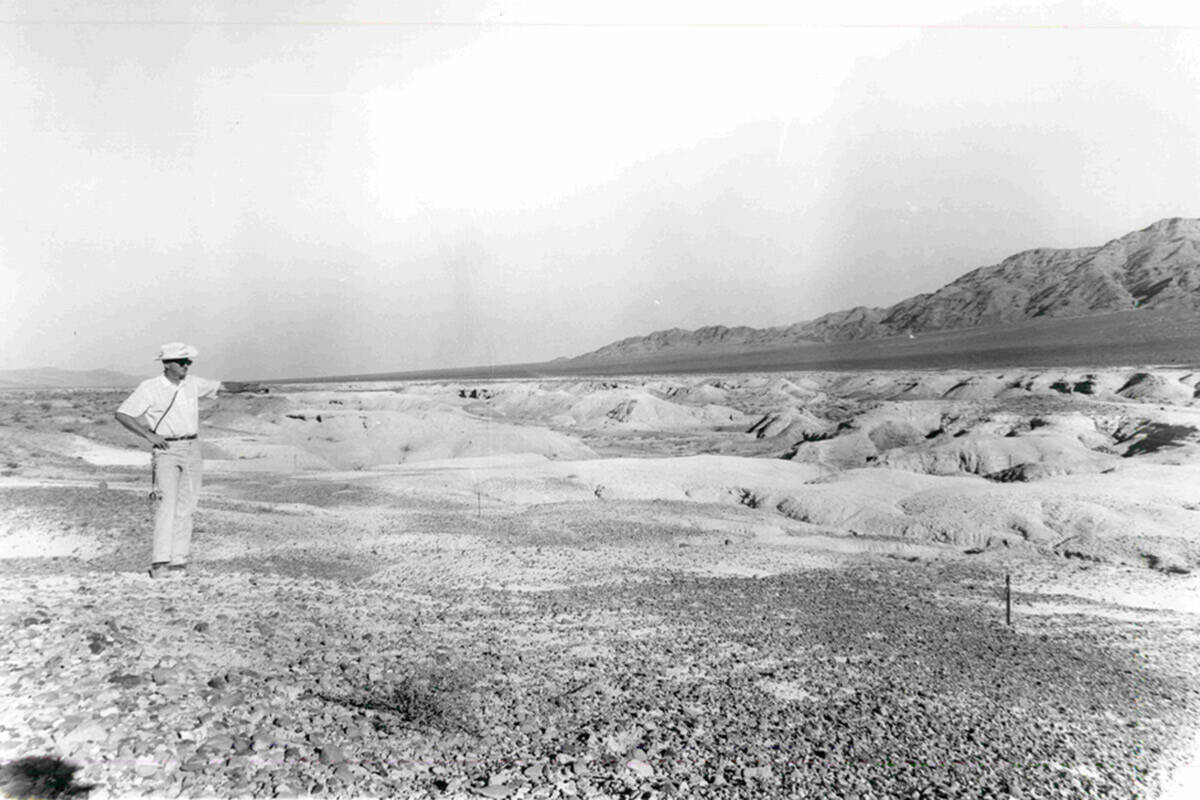Before Ice Age Fossils State Park, there was the ‘Big Dig’ — PHOTOS

Before Ice Age Fossils State Park was even an idea, there was the Big Dig.
From October 1962 to January 1963, archeologists near Tule Springs Ranch moved 200,000 tons of dirt and dug trenches miles long and 30 feet deep to uncover the remains of animals that roamed the Las Vegas Valley tens of thousands of years ago.
Though the Big Dig was the largest exploration of ice age fossils in the valley, it wasn’t the first. Richard Shutler, former curator of anthropology at the Nevada State Museum and leader the Tule Springs archeological expedition, wrote in a 1965 article published in “Current Anthropology” that the dig followed up on previous investigations in 1933, 1953 and 1955 conducted by the Southwest Museum in Los Angeles.
The museum uncovered fire hearths and prehistoric camel bones, along with a bone tool and a stone scraper, Shutler wrote.
Hoping to find evidence that mammoths, camels and other Pleistocene (ice age) animals coexisted with humans, Shutler and a team of 21 archeologists spent months living in tents in the desert, using bulldozers to dig extensive trench systems and dental tools to clean off the delicate fossils found.
Though no human remains were discovered in the area, Shutler and the team found other evidence of human life, including a stone scraper estimated to be 11,000 to 12,000 years old and two utensils made of camel bones, according to Review-Journal reports from 1963.
Shutler told the RJ in 1963 that conditions in the valley “haven’t been conducive” to preserving human remains.
Shutler and the team unearthed more ice age fossils, including remains from mammoths that “stood 16 ft. high at the shoulders, bison that were eight ft. high, and a compact type model of our present-day horse,” the RJ reported.
Shutler said the area near Tule Springs was once home to a shallow lake three miles wide and four miles long.
Eventually, the lake dried up from earth faulting and “a trend toward dryness” over thousands of years, he said.
Five decades after the dig, momentum to turn the land in a state park began in 2017 with then-Gov. Brian Sandoval’s “Explore Your Nevada” tourism initiative, which put $13 million in state funds and $1.2 million in federal funds toward Nevada’s state parks. However, due to delays from the COVID-19 pandemic, the park’s development was postponed for several years.
The park had been set to open at the end of 2023 with trails, a visitor center and life-sized displays of prehistoric animals, the Review-Journal reported in April 2023.
But the Nevada Division of State Parks announced in December that Ice Age Fossils State Park would finally open to the public on Jan. 20.
Contact Taylor Lane at tlane@reviewjournal.com.